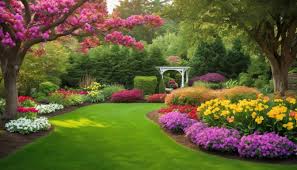The Practical Beauty of DIY Landscaping
Landscaping is not just about beautifying your home; it’s a practical investment that can significantly increase property value. According to a study by Virginia Tech, landscaping can increase a home’s value by as much as 15%. Moreover, the American Society of Landscape Architects recommends investing 10% of your home’s value in landscaping for optimal returns.
Why Homeowners Choose to Landscape
- Cost Savings: By taking on landscaping projects themselves, homeowners can save on professional fees.
- Personalization: DIY landscaping allows for complete creative control, ensuring the final result reflects personal style and preferences.
- Accessibility: With a wealth of resources available, from online tutorials to landscaping magazines, learning the craft has never been easier.
The Importance of Planning and Harmony
A successful landscape design requires careful planning and a harmonious relationship between the home and the garden. Here are some key considerations:
- Complementary Design: The landscape should enhance the architectural style of the home, not clash with it.
- Budgeting: Establish a clear budget to avoid overspending and ensure cost-effective choices.
- Climate Consideration: Choose plants and materials that are suitable for the local weather conditions.
- Design Preferences: Reflect on your personal taste to create a landscape that resonates with you.
- Resource Availability: Utilize available resources wisely, from plant selection to construction materials.
Landscaping for Every Season
To maintain a vibrant garden throughout the year, it’s essential to plan for seasonal changes. A well-thought-out landscape will feature a mix of flowering trees, shrubs with autumn foliage, and plants that offer winter interest. This ensures that your garden remains attractive regardless of the season.
Layering Your Garden
Creating depth and structure in your garden can be achieved through strategic layering:
- Tall Plants: Start with a backdrop of the tallest plants.
- Medium Plants: Step down to mid-height plants for the middle layer.
- Short Plants: Finish with the shortest plants in the front.
Balancing Perennials and Annuals
While perennials provide long-lasting structure, supplementing them with annuals can fill gaps and provide continuous color:
- Perennials: Offer longevity but have limited blooming periods.
- Annuals: Bloom for one season, providing an opportunity to refresh the garden’s color palette annually.
The Role of Evergreens
Incorporating evergreens into your landscape design ensures year-round greenery and structural continuity. They can create focal points, serve as a backdrop for seasonal blooms, and add texture to the garden.
Conclusion
Landscaping is a rewarding endeavor that can significantly enhance the beauty and value of your home. With careful planning, consideration of seasonal dynamics, and a balance of plant varieties, any homeowner can create a stunning outdoor space. Remember, the key to successful landscaping lies in the harmony between the home’s architecture and the natural environment.


